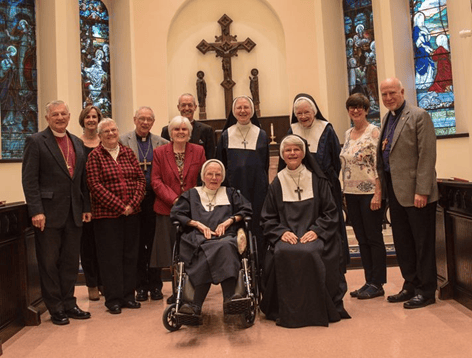VATICAN CITY — Pope Francis often warns about the dangers of gossip, likening tattlers to terrorists who “drop a bomb with their tongue” and “destroy the reputation of others.”
But hearsay and slander also pose a problem in the world of art and once led to the destruction of an extremely rare composition in the Apostolic Palace by the Renaissance master Bernardino di Betto, better known as Pintoricchio.
During a lecture Feb. 15 in Rome, Francesco Buranelli, president of the Commission for the Protection of Monuments of the Holy See and former director of the Vatican Museums, presented a picture of what can happen when fierce family rivalries, a Counter-Reformation “cancel culture” and 500 years of “fake news” find the perfect target in a problematic pope.
Corruption, nepotism, having mistresses and fathering children were unfortunately common in the lives of several popes during the Renaissance as the temporal role and powers of the papacy grew.
However, it was the papacy of Pope Alexander VI, the infamous Rodrigo Borgia, that became synonymous with the abuses of the time.
One successor was so disgusted by his predecessor’s reputation, he abandoned the brand-new Borgia Apartments, decorated between 1492 and 1494 by Pintoricchio, and moved into a different suite of rooms spruced up by Raphael.
The Spanish Borgia family was a focal point of hostility in Rome, and “it’s easy to imagine how many stories that were true, partially true, falsely interpreted and pure fantasy” were fabricated and rehashed by their enemies and reformers, Buranelli said.
One particular story was that Pintoricchio used the pope’s young and beautiful mistress, Giulia Farnese, as the model for Our Lady in a scene painted over a door in the pope’s bedroom of the Borgia Apartments. The 16th-century Italian artist and historian, Giorgio Vasari, immortalized the rumor in his 1568 edition of the “Lives of the Most Excellent Painters, Sculptors and Architects,” saying the scene also featured the face of Pope Alexander, “who is adoring the Madonna.”
Buranelli said this claim also brought “long-lasting and obvious embarrassment” to the Farnese family, whose ascent to power was due to Giulia’s forcibly arranged relationship with the powerful Cardinal Borgia.
Responding to the Protestant Reformation, Pope Pius V brought his churchwide cleanup efforts to the Vatican’s art collection, too, sending countless pieces that seemed “too pagan” into exile, Buranelli said.
They even risked losing the Vatican Museums’ prized ancient sculpture of Laocoön, he said; but thanks to “the intelligence and farsightedness” of many cardinals, many pieces were saved by hiding them behind paneled niches or by “clothing” naked forms.
Pope Alexander VII, who sought to rehabilitate his papal namesake with his election in 1655, decided the “scandalous” scene in the Borgia Apartments had to go. But he saved two large, detached fragments depicting the “Head of Our Lady” and “The Baby Jesus of the Hands,” and sent them off to the art collection of his family, the Chigi.
In 1940, three descendents of the Chigi family visited a home in Mantua where the owner showed them a 17th-century painting of a pope kneeling before baby Jesus and Mary. The Chigi relatives immediately recognized the resemblances between the Our Lady and Christ child in the painting and the fragments in their collection.
The painting solved several mysteries: It was an accurate copy of Pintoricchio’s long-gone wall fresco disparaged by Vasari, and it explained the original context of these disjointed fragments.
In an unexpected twist, the painting in Mantua had been secretly commissioned in 1612 by a rival family of the Farnese to taunt them, Buranelli said. This tool of ridicule ended up being the only accurate documentation of the complete fresco’s existence and composition.
However, 21st-century experts still had a hard time proving or disproving the legend that the Our Lady was modeled after Giulia Farnese, since no official portraits of the noblewoman existed, Buranelli said.
Primary written sources, however, described Giulia as having a round face, black eyes and dark coloring — features that do not match the narrow face and fair features Pintoricchio chose for this and his other depictions of Our Lady, making the legend “absolutely preposterous,” he said.
Unfortunately, Buranelli said, 500 years of fuss over a presumed scandal meant most of the art world missed the real rarity portrayed in the original fresco.
Traditional portraits show popes or patrons kneeling in adoration before the baby Jesus. But he said this is the only work he knows about that shows someone other than Mary or her mother, Anne, touching the Christ Child.
“It is an extremely rare iconography that I have never found” elsewhere, he said. The only remotely similar example he was aware of, he said, was the ninth-century mosaic Pintoricchio certainly saw in Rome’s Church of St. Cecilia; it shows Pope Paschal I kneeling and caressing Mary’s foot.
Buranelli said he believes Pintoricchio was showing with this “very important detail” of touch that one could have “a tangible relationship” with God after following “the story of humanity’s salvation” mapped out in the rooms’ frescoed images.
The journey of faith leads to this image of a loving Mary with Jesus, who holds the “cross-bearing orb” of his dominion over the earth and imparts his blessing, he said.
The kneeling, newly elected Pope Alexander VI has one hand over his heart and the other holding the child’s foot to symbolize becoming the universal vicar of the church, accepting the Petrine ministry and recognizing the divine origin of the papacy, he said.
This reading, Buranelli said, should “definitively sweep away” the many “more prosaic interpretations” and myths “that led to the destruction of a work that today we can only piece together with the few fragments left.”
A “little breeze of calumny” meant to malign an artist, Giulia and a pope, he said, ended up making a piece of precious art pay “a steep price.”
















